In 2018, the Research Team held the first Johns Hopkins Research Photo Contest, soliciting photos of research and creative endeavors being carried out by Johns Hopkins faculty, staff, fellows and students. Of the 104 submissions, two winners were selected from each of the following categories: Undergraduate Student, Graduate Student, Research Scientist/Postdoctoral Fellow, and Faculty/Staff. Of these eight awardees, one was selected as a grand prize winner. Thank you to all who participated and congratulations to the winners!
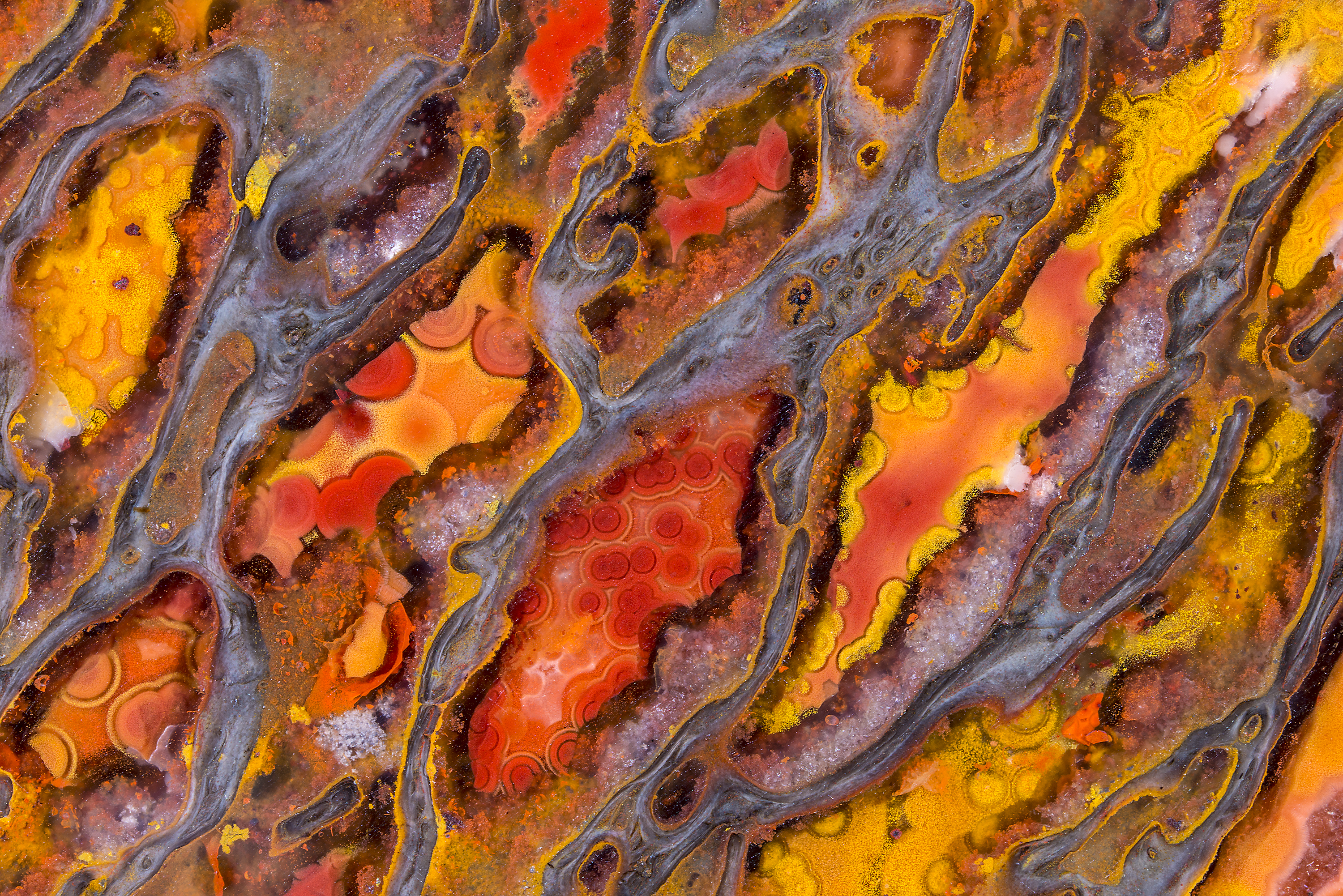
Norman Barker, M.S., M.A., R.B.P., is a professor of Pathology and Art as Applied to Medicine, and director of the Pathology Photography and Graphic Arts Laboratory, at the Johns Hopkins University School of Medicine.
Description: Dinosaur Bone – Jurassic; Morrison Formation; Colorado, U.S.A.; Quartz and some of the associated minerals that give this specimen its color enter into the fossilizing process as solutions, gels, and sols. Although they move as liquids, gels and sols are made up of very small particles bound together by weak electrical bonds. In this specimen, the linear arrays of small round structures were produced by local condensations of particulate mineral. During their consolidation, small puddles of pigment formed that are unrelated to the structure of the bone itself. Red agate fills areas occupied in life by nutrient blood vessels and the cells that maintained the bone by building it up (osteoblasts) or tearing it down (osteoclasts). This controlled construction and destruction of bone is essential to maintaining appropriate levels of calcium in the blood, which are critical to life because calcium plays a major role in cardiac rhythmicity, muscular contraction, nerve conductance, heart contraction, and the activity of many important enzyme systems. The plexus-like structure of metaphyseal bone provides an extensive surface for bone cells to work upon.
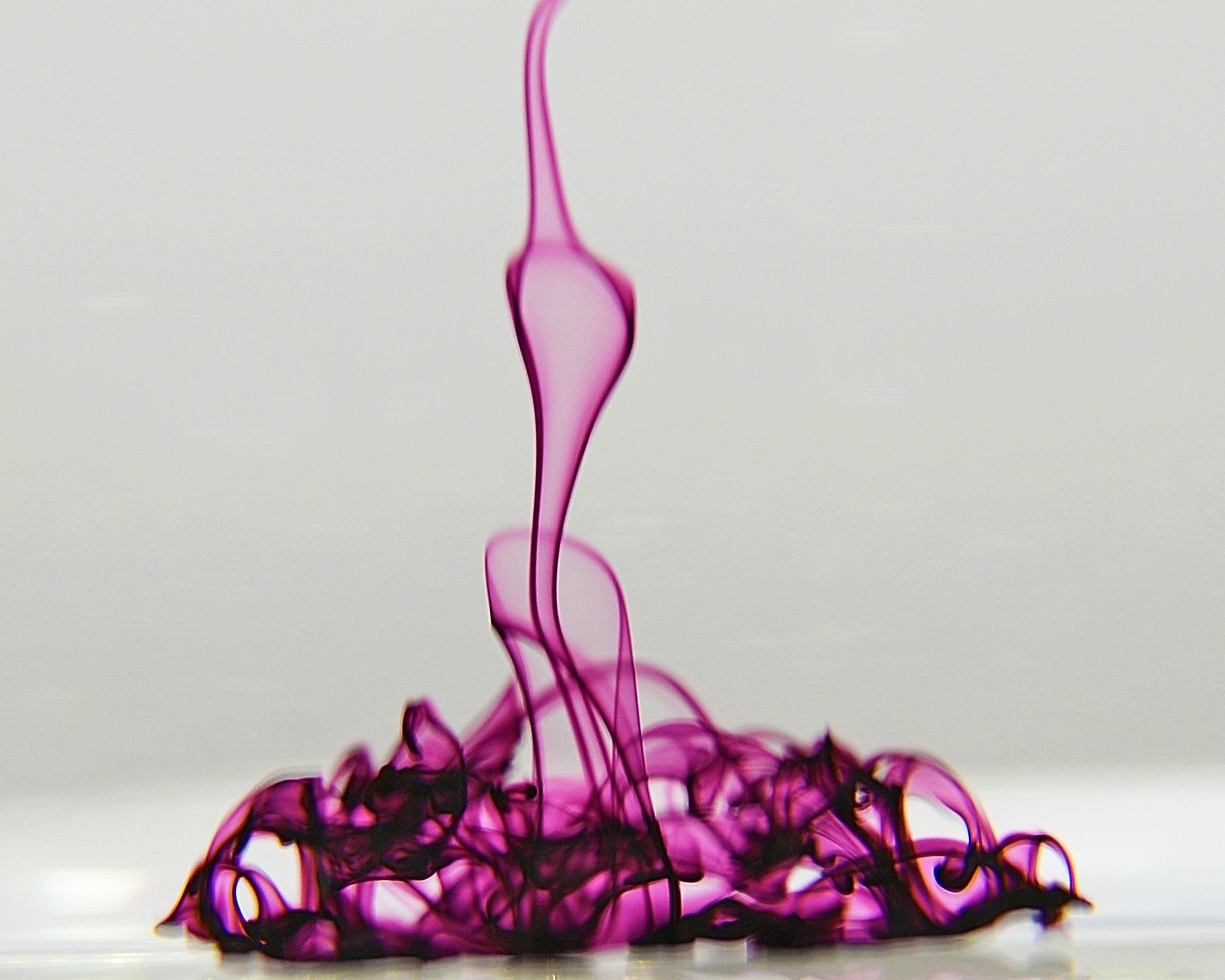
Dr. Sudath Hapuarachchige is a Research Associate on the Cancer Imaging Research team in the Russell H. Morgan Department of Radiology and Radiological Science.
Description: Mixing optical theranostics in saline.
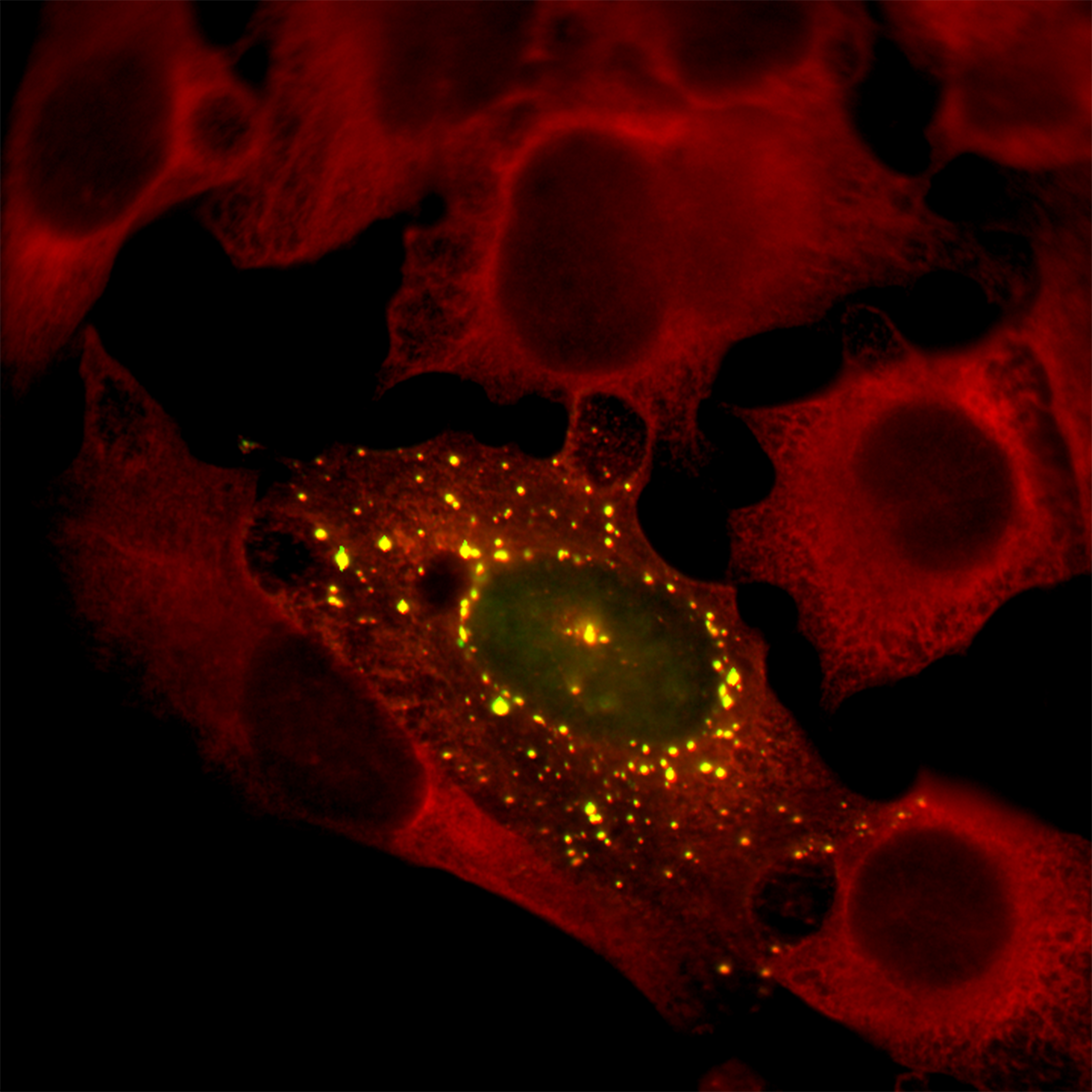
Dr. Jayabalan is a postdoctoral fellow in the lab of Dr. Anthony Leung, Department of Biochemistry and Molecular Biology, Bloomberg School of Public Health.
Description: Hijacking at the cellular level; Upon infection, viruses usually seize and utilize host cellular resources to replicate their own genome. The image captured show one of the cell infected by CHIKUNGUNYA VIRUS (cell with yellow dots). Cells were stained with G3BP, a human protein (red) and nsP3, a viral protein (green). The viral protein nsP3 efficiently sequesters G3BP and forms the viral replication complex – whereas blocking this association is an active target for antiviral strategies.
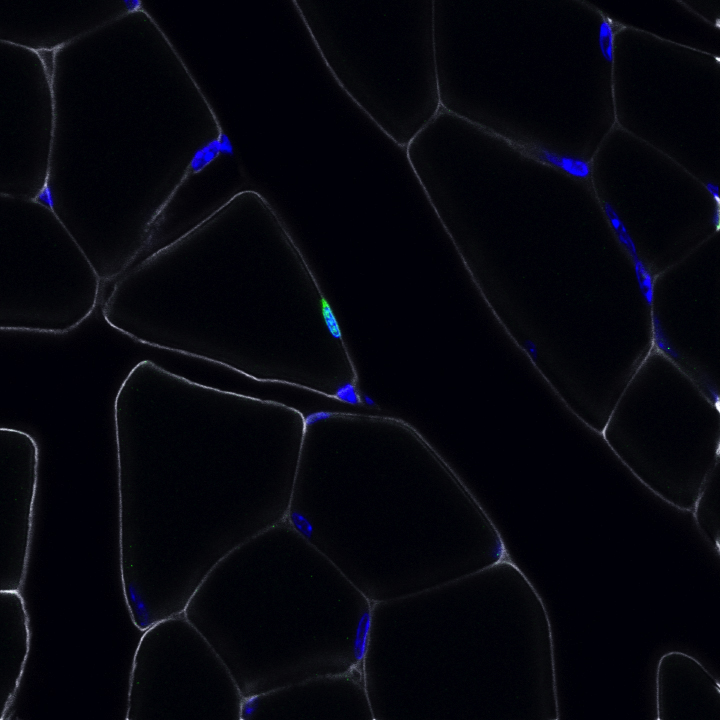
Dr. Jeffrey Ehmsen is a postdoctoral fellow in the lab of Dr. Ahmet Hoke in the Solomon H Snyder Department of Neuroscience, School of Medicine.
Description: Satellite Cells – The adhesion protein Otoancorin (green) is expressed in skeletal muscle satellite cells, a sparse population of cells that reside between the plasma membrane and basal lamina of skeletal muscle myofibers with the capacity to regenerate new myofibers in settings of muscle injury.
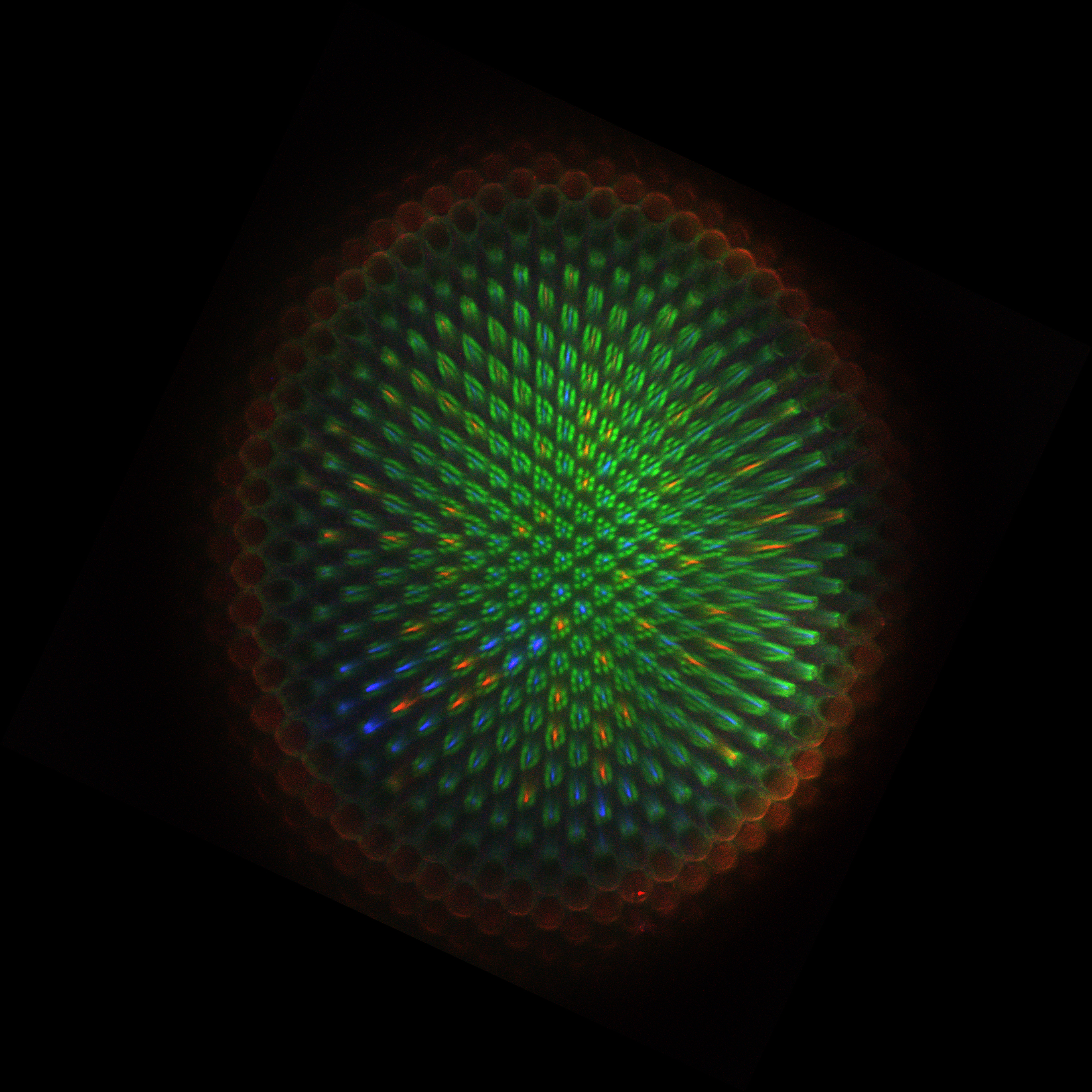
Caitlin Anderson is a PhD candidate in the lab of Dr. Robert Johnston in the Department of Biology, Krieger School of Arts & Sciences.
Description: The photoreceptors of the adult fruit fly retina lie in a beautiful hexagonal grid. Despite this very regular patterning, the fly eye is actually a great example of how randomness is incorporated into development programs. Just like the human eye, these flies have a mosaic of photoreceptor subtypes important for vision that are specified by an unknown stochastic mechanism. Green in this image marks the ommatidia, or unit eyes, and within each unit eye is either a red or blue cell, marking the two different R7 photoreceptor subtypes.
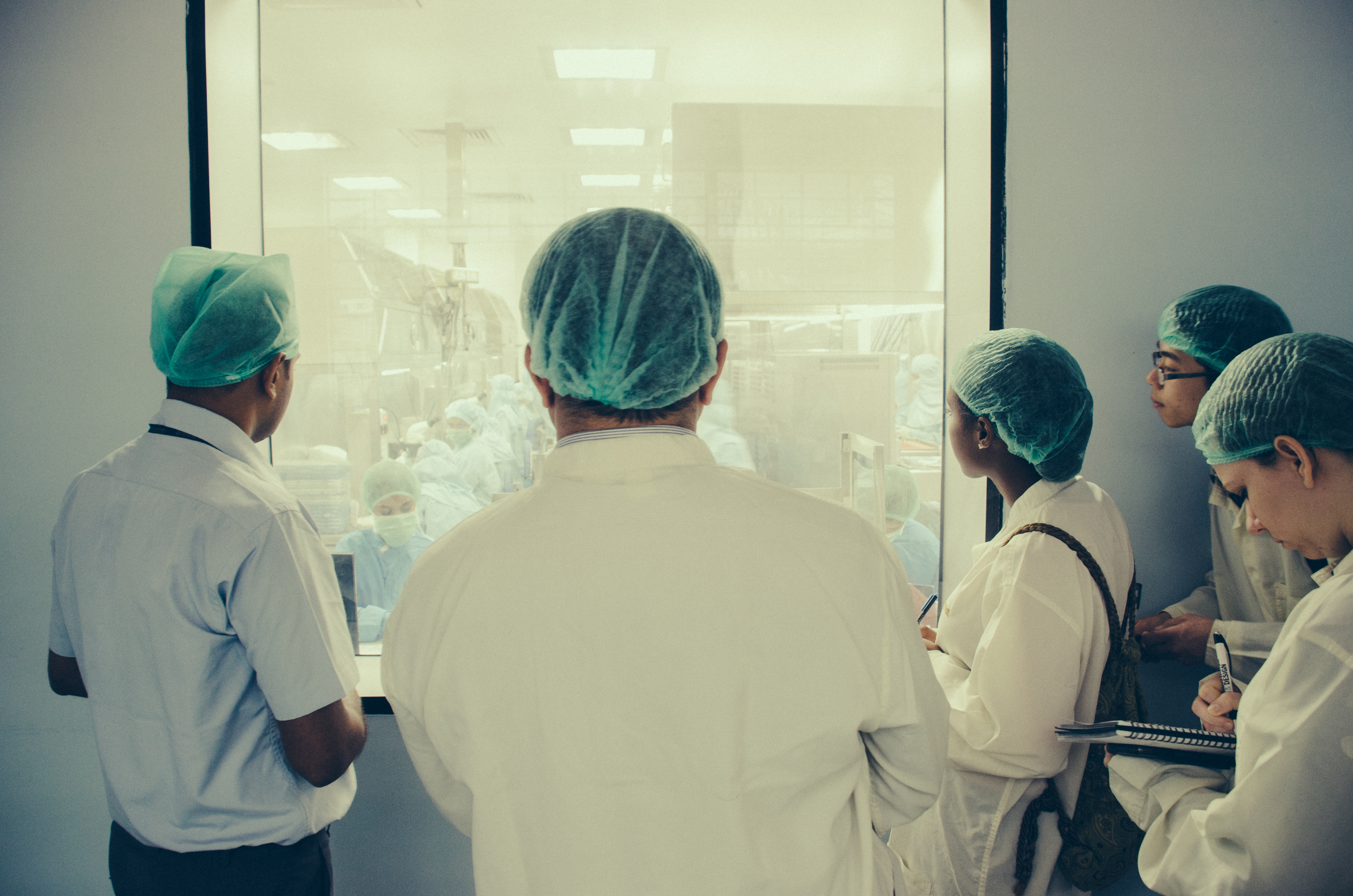
Benjamin Ostrander is a medical student who is currently taking a gap year to pursue a master’s degree in bioengineering innovation and design. He is working with Dr. Kunal Parikh in the Center for Bioengineering Innovation and Design, Whiting School of Engineering.
Description: The Johns Hopkins Center for Bioengineering Innovation and Design (CBID) ophthalmology team listens as the director of the Intraocular Lens (IOL) Division at Aurolab explains the manufacturing process of IOLs. The team was conducting research in partnership with the Aravind Eye Hospital, the largest eye care system in the world, in order to develop an innovation ecosystem there.
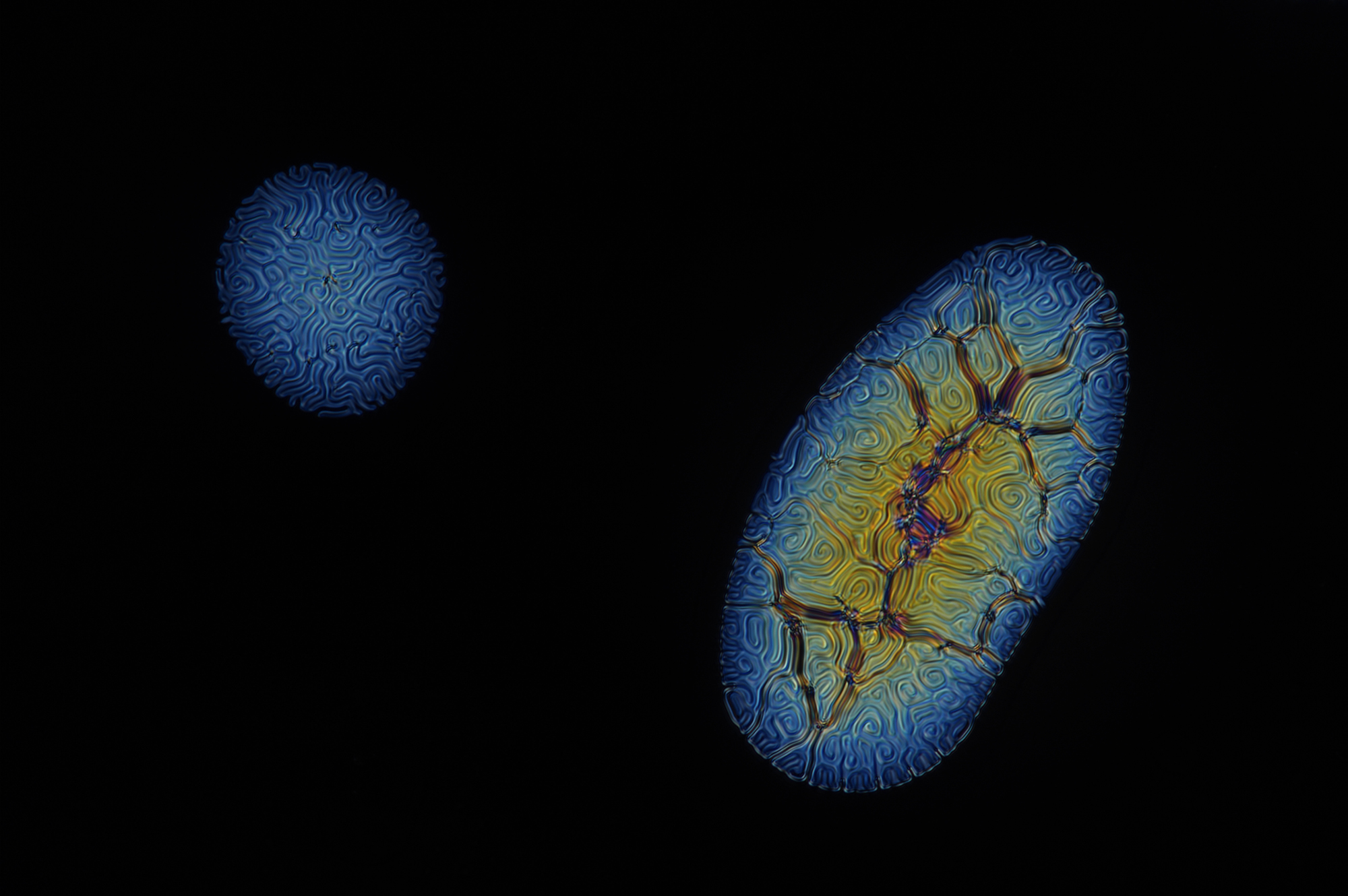
Beatrice Lunsford-Poe is a junior working with Dr. Francesca Serra in the Department of Physics & Astronomy, Krieger School of Arts & Sciences.
Description: “Fingerprint” texture in isolated droplets of chiral-nematic (cholesteric) liquid crystal on a glass slide. In cholesteric liquid crystals, the average direction of the molecules forms a helical structure. Image taken with polarized optical microscopy (Nikon LV100N-pol), 20x magnification.
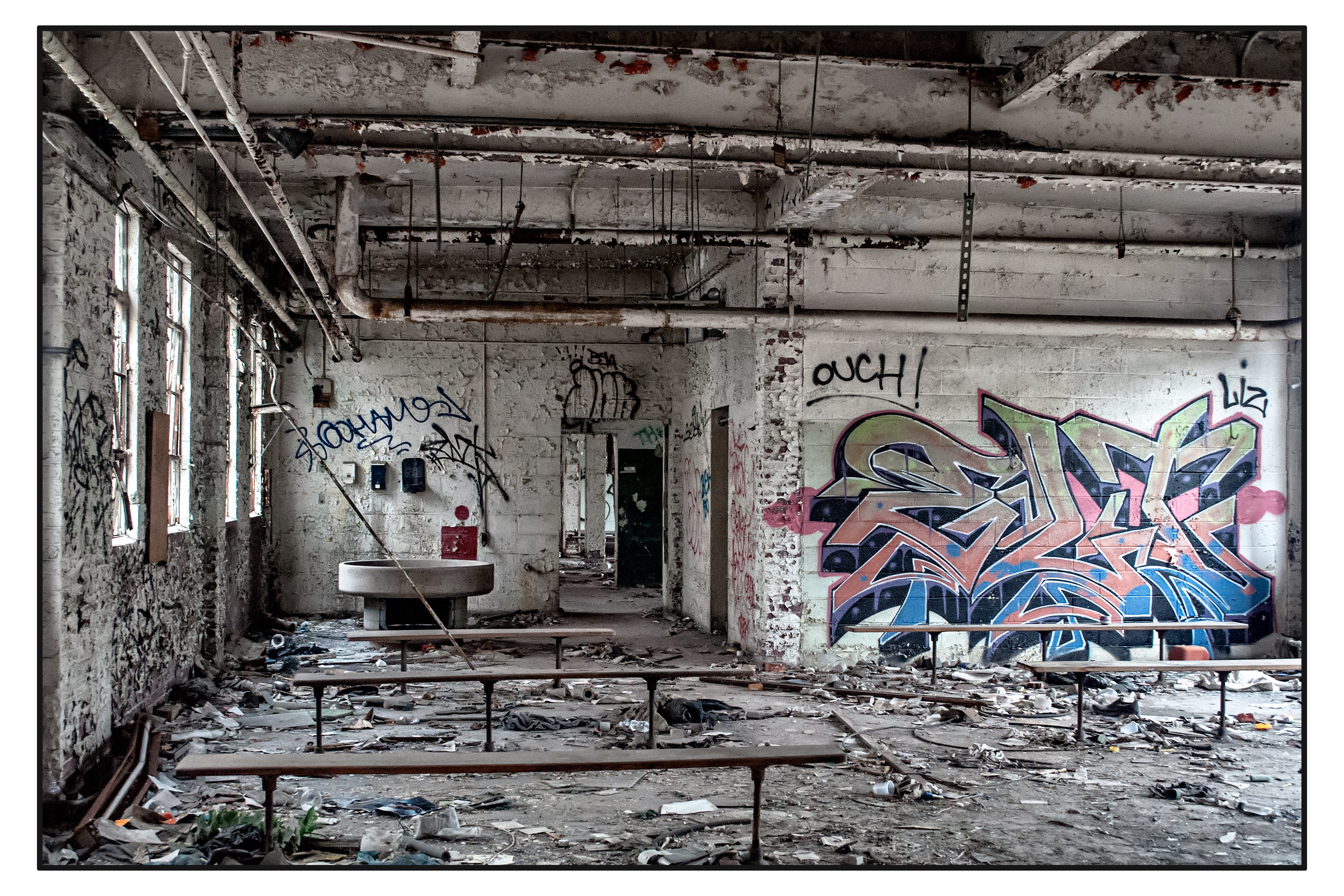
Cristina Murillo is a senior working with Dr. Sydney Van Morgan of the Program in International Studies, Krieger School of Arts & Sciences.
Description: Struck by its former potency and the subsequent carelessness of its abandonment, I chose the Pemco Factory as the subject of my research project for Documentary Photography (AS.371.303). Degraded industrial factories stand as haunting reminders of the ephemeral nature of human routine and existence. The Pemco factory manufactured materials for porcelain and ceramics for nearly a century, and was the daily stomping ground of thousands of workers. However, as the photograph seeks to demonstrate, not even the most authoritative structures are permanent.